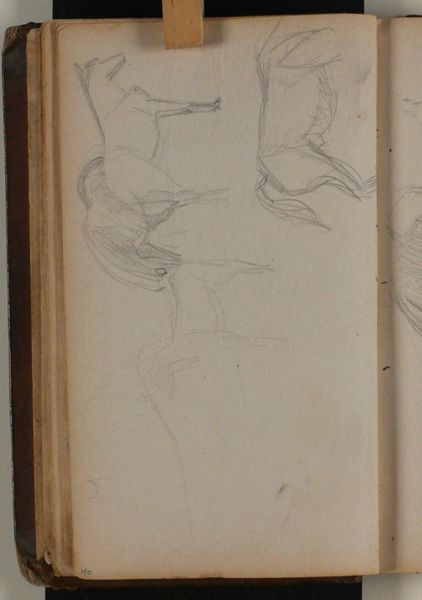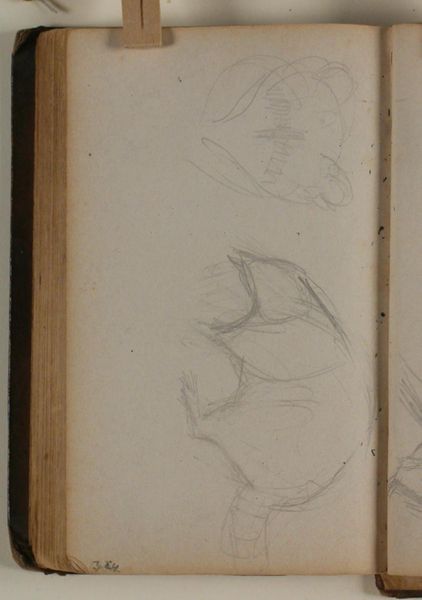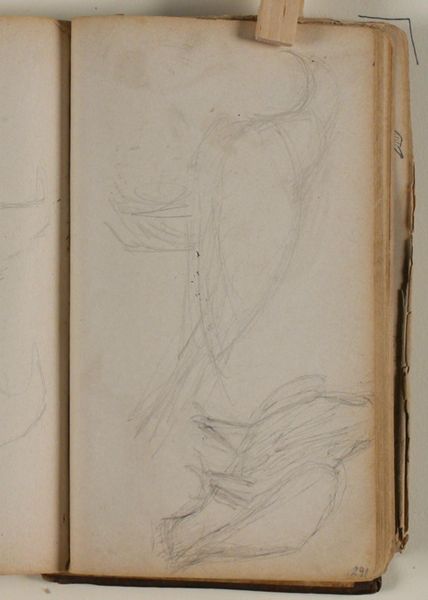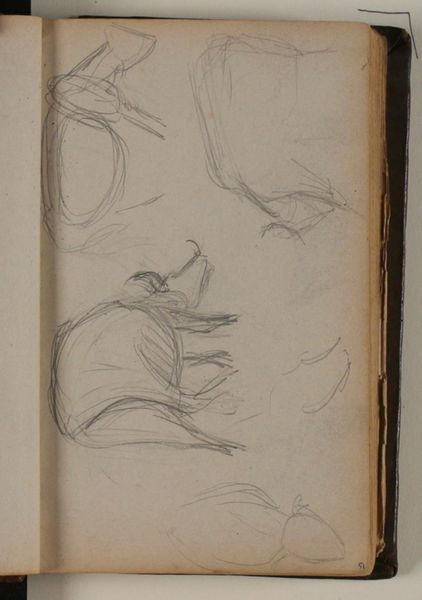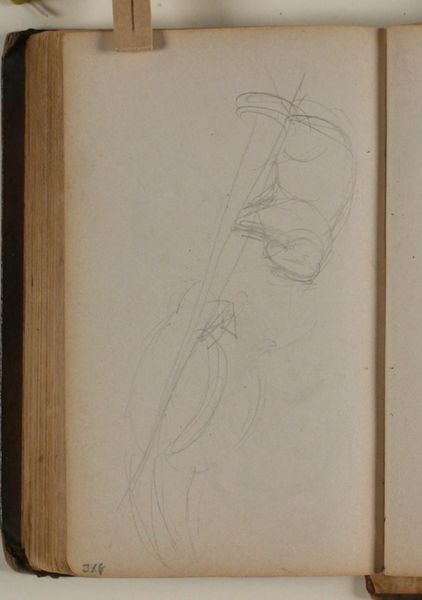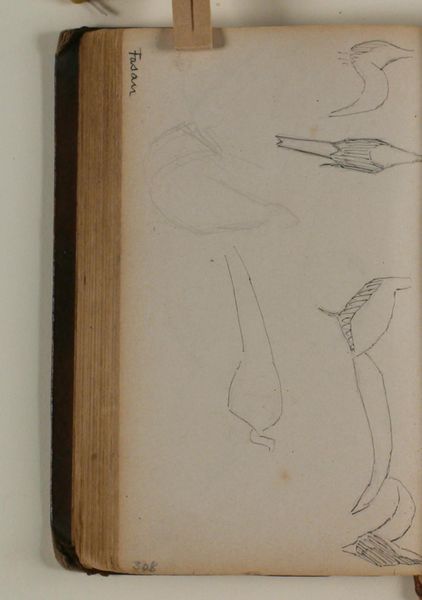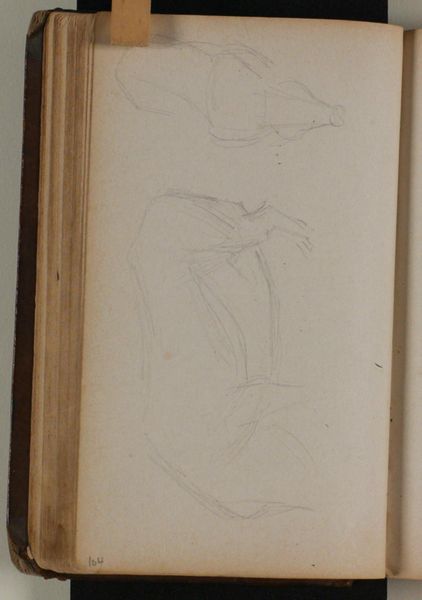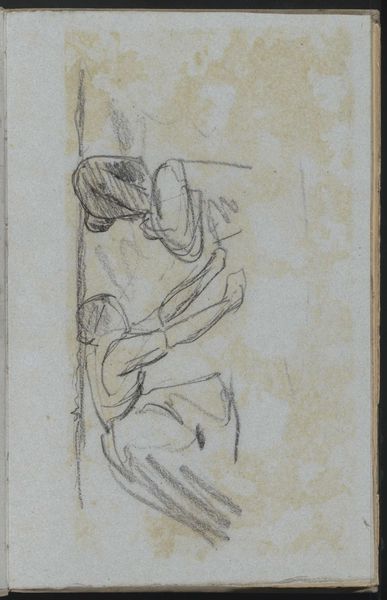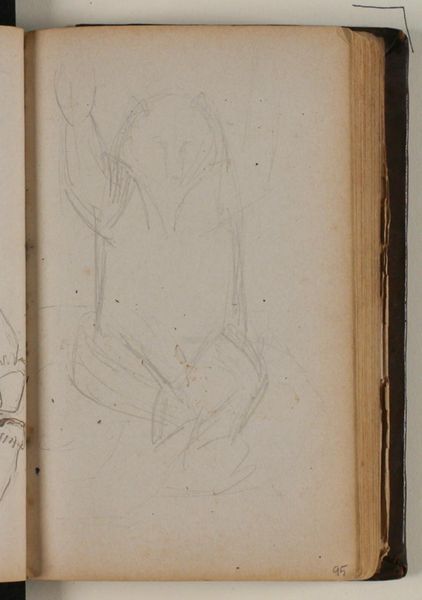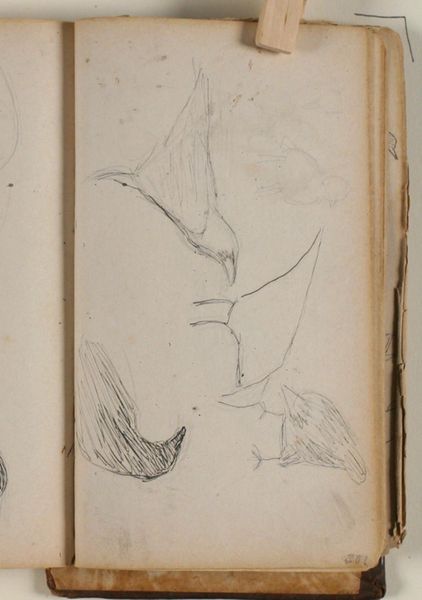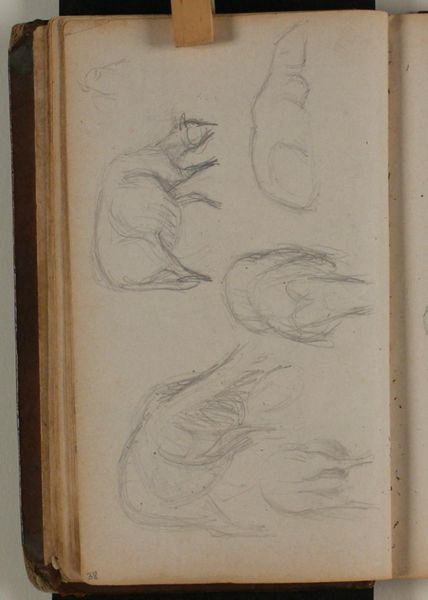
drawing, paper, pencil, graphite
#
drawing
#
figuration
#
paper
#
form
#
pencil
#
line
#
graphite
Dimensions: 162 mm (height) x 98 mm (width) (monteringsmaal)
Curator: Looking at this sheet of studies by Niels Larsen Stevns titled "Studier af heste", made between 1864 and 1941, what immediately strikes you? Editor: The rawness, almost like a peek into the artist’s mind. These graphite lines on paper, so economical and efficient in describing volume and suggesting motion, give a real insight into the creative process. You can feel the hand moving. Curator: It's precisely that immediacy that fascinates me. Stevns uses readily available materials to record, to practice. This wasn't destined for the gallery; it's work. A material engagement with his subject. The graphite itself is interesting, given its wide accessibility – almost anyone with access to paper and a pencil could try to achieve something similar. How do these rapid notations enter the world of art making? Editor: That's the intriguing part isn’t it? Sketches like these, part of an academic tradition, provided foundational knowledge. Training, essentially. Think of how they helped him engage with notions of animal strength, agriculture and land. But more than that, these ended up being circulated – copied, reinterpreted, discussed amongst his contemporaries. An important function to building the modern image. Curator: So, its public value really is wrapped up in the artist's studio itself. The circulation of ideas, labor and artistic interpretation that are not immediately obvious to the viewer, until they begin unpacking how images and meanings function in culture. It also shows the hand as material – each line and gesture informing what would become the final artworks exhibited later. Editor: Indeed. It reminds us that what ends up in a gallery represents only one tiny portion of an artist's engagement with his or her subjects. What about the work that led to that single, perfect brushstroke we often marvel at in museums? This feels more genuine, less mediated somehow. Curator: These lines have informed our engagement and appreciation. Studying pieces like these provides a lens through which we can understand how social conditions and training support creativity and the production of iconic figures like Niels Larsen Stevns. Editor: And understanding the work helps us value the artwork more wholly and to acknowledge the crucial context surrounding art production.
Comments
No comments
Be the first to comment and join the conversation on the ultimate creative platform.
